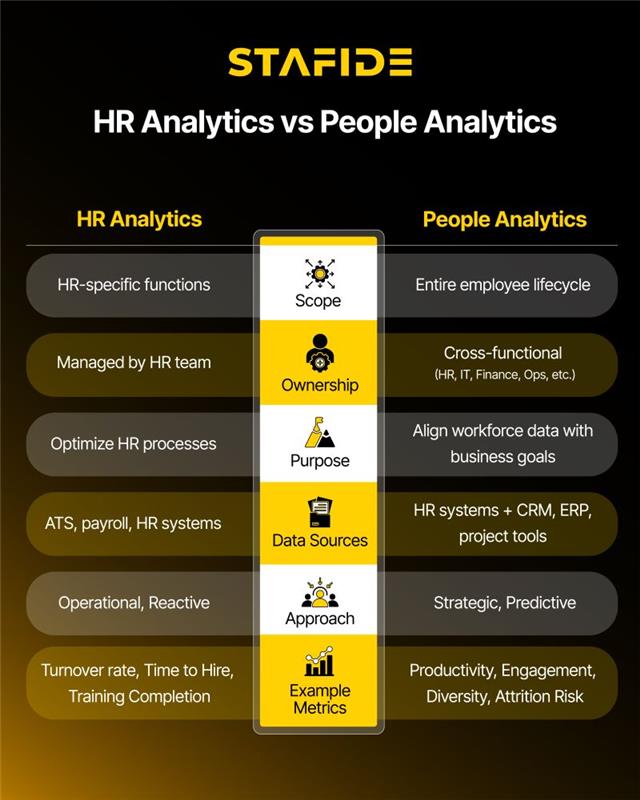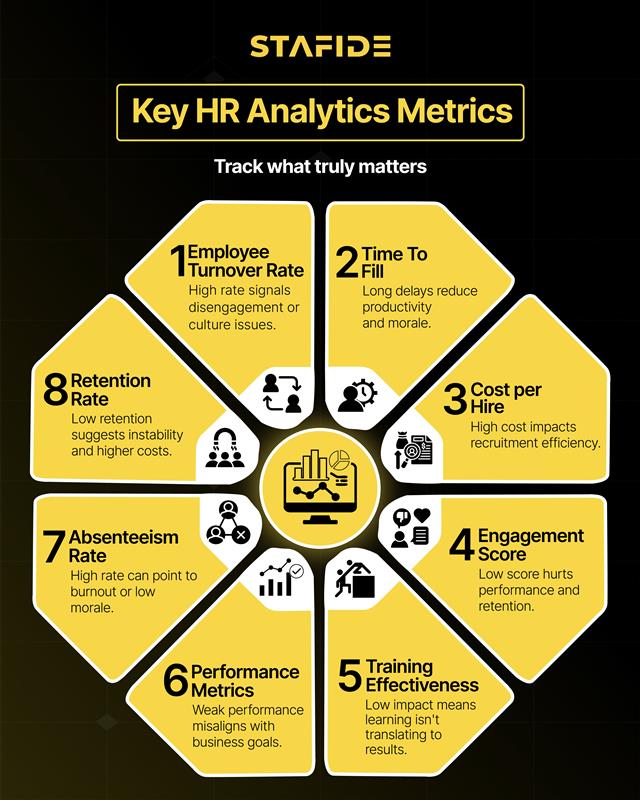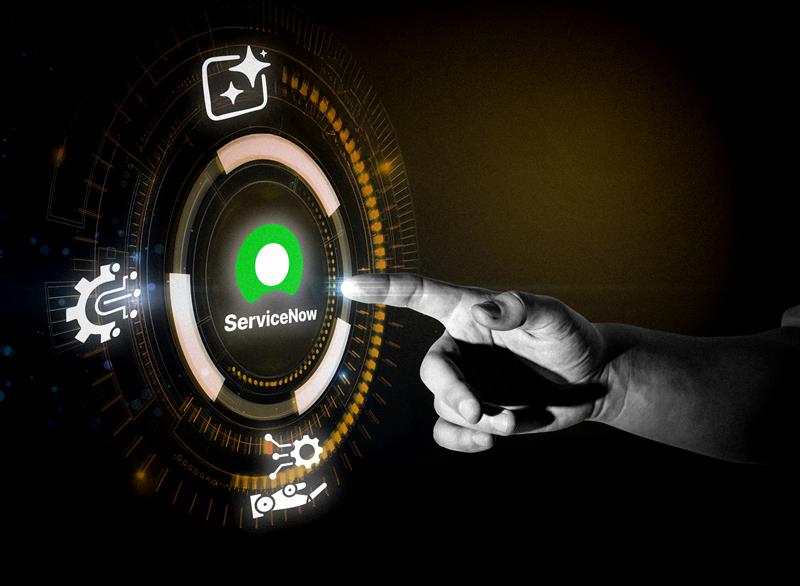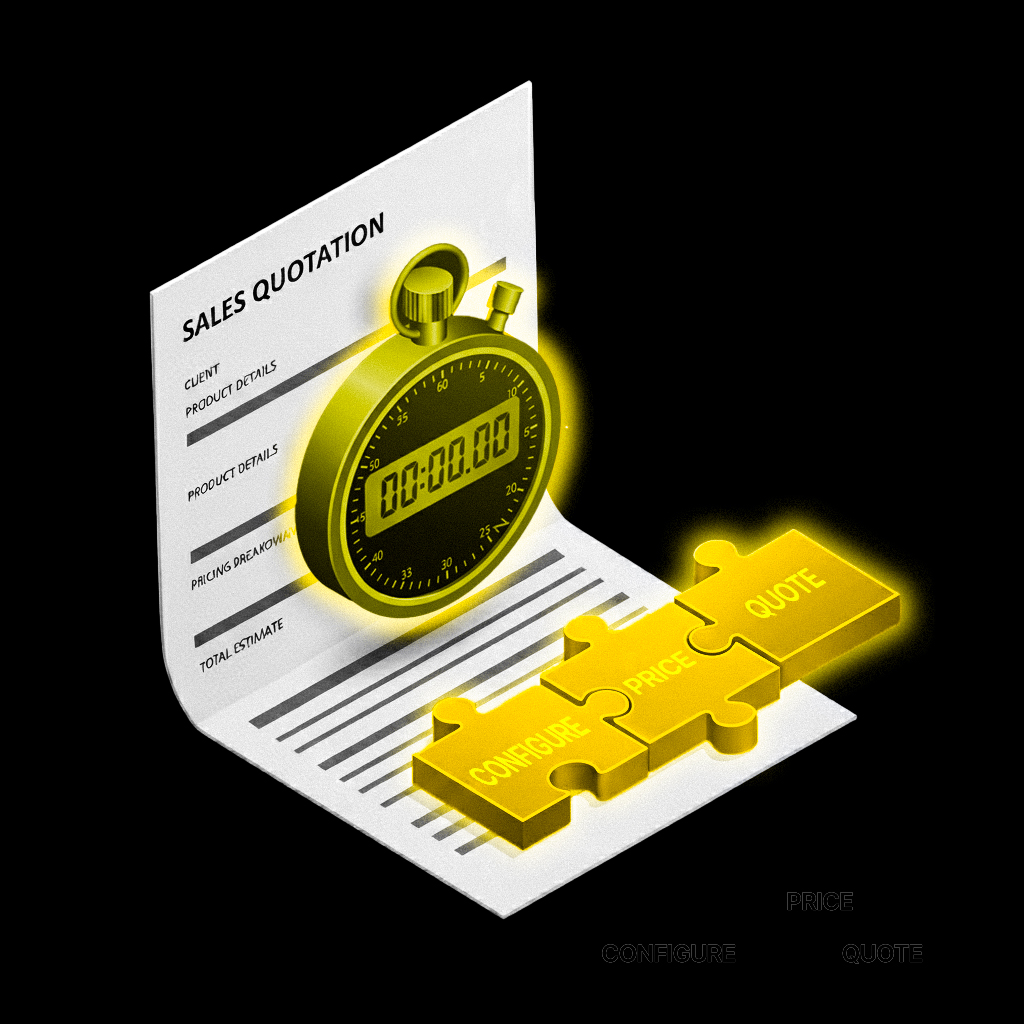Data is no longer just collected; it is now driving strategy. And nowhere is this more transformative than in Human Resources. HR analytics has emerged as the catalyst for decoding workforce behavior, driving operational efficiency, and building people strategies that are ready for the future.
This blog explores how HR analytics transforms workforce data into actionable strategies. It covers key metrics, practical use cases, a streamlined 4-step analytics process, and strategic priorities that align people initiatives with broader business goals.
What is HR Analytics?
HR Analytics (or workforce analytics) is the data-driven arm of HR, focusing on collecting, analyzing, and interpreting workforce data to fuel smarter decisions. It bridges the gap between traditional HR intuition and business intelligence.
“The goal is to transform raw data into meaningful insights that drive action.”
HR analytics helps tackle core areas like recruitment, engagement, performance, and retention—not with guesswork, but with evidence-based insights that drive impact.
HR Analytics vs. People Analytics
Though often used interchangeably, HR Analytics and People Analytics differ in scope, ownership, and strategic impact. Here’s a breakdown of how they diverge—and where they overlap.
HR Analytics: Focused, Operational, HR-Centric
- Primarily concentrates on HR-specific processes, functions, and metrics.
- Managed and utilized by the HR department alone, typically without cross-departmental collaboration.
- Designed to improve operational efficiency within HR—such as recruitment, performance reviews, and training.
- Draws data exclusively from HR systems like ATS (Applicant Tracking Systems), payroll systems, and performance management tools.
- Example Metrics:
- Employee turnover rate
- Time to hire
- Training completion rate
- Cost per hire
- Use Case: An HR manager uses analytics to reduce new-hire turnover by analyzing exit interview trends and adjusting onboarding processes.

People Analytics: Strategic, Holistic, Business-Wide
- Takes a broader lens by analyzing the entire employee lifecycle across various business units.
- Cross-functional—includes collaboration between HR, finance, IT, operations, and even marketing teams.
- Aims to align workforce insights with business strategy and long-term goals such as productivity, retention, and innovation.
- Pulls data from multiple systems—HR platforms, CRM, ERP, project management tools, and more.
- Example Metrics:
- Employee productivity per departmentWorkforce diversity and inclusion trendsOrganizational network analysis
- Cultural fit and engagement correlations
- Use Case: A CHRO collaborates with finance and IT to use predictive modeling to forecast attrition risk in critical roles and inform talent pipeline planning.
Essential Insight
- HR Analytics is a powerful tool for optimizing day-to-day HR functions.
- People Analytics offers a strategic edge by enabling organizations to make holistic, long-term decisions that impact the entire business.
Together, they’re not competitors—but complementary tools. When integrated, they unlock the full power of data-driven workforce management.
Key HR Analytics Metrics
To lead with data, you need the right compass metrics. Here are eight essentials every HR team should track:
- Employee Turnover Rate
A high rate can signal trouble—think disengagement, poor leadership, or cultural mismatch. - Time to Fill
Long hiring cycles lead to decreased productivity and increased team frustration. - Cost per Hire
Know where your hiring dollars go—optimize spend without compromising quality. - Employee Engagement Score
A highly engaged team is more productive, loyal, and innovative. - Training Effectiveness
Are your learning programs moving the needle? Measure skill growth and business outcomes. - Performance Metrics
Tie individual performance to team and company-wide goals. - Absenteeism Rate
Spot attendance trends that may hint at burnout, stress, or morale issues. - Retention Rate
A high retention rate reflects a healthy, stable workplace—and lowers hiring costs.
Think of these as your vital signs—each offering a clue about your organization’s health.

The 4-Step HR Analytics Journey
To unlock the full value of your HR data, begin with a structured, strategic approach.
1. Collect the Right Data
You can’t analyze what you don’t track. Start by gathering:
- Internal data : employee tenure, performance records, training history, etc.
- External data : industry benchmarks, compensation trends, market stats
“Data is a summary of thousands of stories—share a few to make it meaningful.”
2. Monitor and Compare
Crunch the numbers and compare them with:
- Past performance
- Industry averages
- Internal goals
Key areas:
- Hiring (cost per hire, time to hire)
- Engagement (turnover, retention, satisfaction)
- Productivity (output per employee, absenteeism)
- Development (training ROI, completion rate)
3. Analyze for Meaning
Here’s where the magic happens. Use four levels of analysis:
- Descriptive : What happened? (e.g., 16% turnover last year)
- Diagnostic : Why did it happen? (e.g., low engagement in sales)
- Predictive : What might happen? (e.g., 20% expected turnover in 6 months)
- Prescriptive : What should we do about it? (e.g., restructure incentives, launch a mentorship program)
4. Take Action
Insights are only valuable when acted upon. Use your findings to:
- Adjust policies
- Redesign workflows
- Refine talent acquisition
- Boost employee experience
Data fuels direction. But action fuels impact.
HR Analytics in Practice
Here are practical applications of HR analytics that enhance employee engagement and improve recruitment outcomes.
Employee Engagement Analytics
- Pulse Surveys : Real-time mood checks to assess employee sentiment
- eNPS (Employee Net Promoter Score) : Gauges loyalty and satisfaction
- Social Network Analysis : Maps communication patterns to identify influencers and isolated teams
- Exit Interview Analysis : Unlocks the ‘why’ behind attrition
- Performance vs. Engagement : Correlates happiness with productivity
Hiring & Recruitment Analytics
- Quality of Hire : Tracks new hire success post-onboarding
- Source of Hire : Pinpoints which channels bring top performers
- Applicant Drop-off : Reveals friction points in the application process
- Offer Acceptance Rate : Indicates how compelling your value proposition is
- Candidate Experience Feedback : Enhances employer brand
- Skill Gap Mapping : Matches talent needs with available applicant pools
Workforce Analytics Market Trends
- According to Fortune Business Insights, the global workforce analytics market was valued at US $2.07 billion in 2024 and is expected to reach US $2.37 billion in 2025, growing at a 14.0% CAGR through 2032 (Source : Workforce Analytics Market Size, Growth | Analysis Report [2032] ).
- According to Cognitive Market Research, the Europe workforce analytics market is projected to reach US $655.92 million in 2025, with a robust compound annual growth rate (CAGR) of 14.1% through 2033.
Together, these data points offer a clear and updated view of how HR analytics is gaining momentum globally and the scale of investment and impact it continues to drive.
Best Practices to Nail HR Analytics
To truly unlock the power of HR data, follow these modern best practices:
1. Clean data leads to clear, reliable insights.
Make sure your data is:
- Accurate
- Complete
- Up-to-date
Poor-quality data results in poor-quality outcomes—always.
2. Choose the Right Tools
Invest in analytics platforms that fit your organization. Popular choices include:
- Workday
- BambooHR
- Visier
- Tableau
- PeopleSoft
Look for tools that offer real-time dashboards, seamless integrations, and intuitive UX.
3. Build a Data-First Culture
Foster curiosity. Encourage teams to ask:
- “What does the data say?”
- “Why is this happening?”
- “What can we do about it?”
Data literacy is the new HR superpower.
4. Prioritize Privacy & Compliance
Protect sensitive employee data. Ensure:
- GDPR or local regulation compliance
- Secure storage
- Ethical data use
Trust builds loyalty.
5. Upskill Your HR Team
From Excel to Python to storytelling with dashboards—give your HR professionals the tools to thrive.
6. Start Small, Then Scale
Pick a focused problem—like reducing new hire turnover—and grow from there. Quick wins build momentum.
7. Align With Business Goals
Don’t track data for the sake of it. Anchor your analytics strategy to what the business values most—growth, retention, performance, or innovation.
Key Objectives of HR Analytics
Every data point should map back to a business goal. Here’s what HR analytics should aim to achieve:
- Improve workforce productivity
- Boost employee engagement
- Optimize hiring pipelines
- Predict and reduce turnover
- Align HR with business strategy
- Measure impact of HR initiatives
- Foster a culture of evidence-based decisions
- Identify top talent and growth opportunities
- Streamline learning and development
- Enhance diversity, equity, and inclusion (DEI) efforts
“Unlocking how HR drives bottom-line results is the ultimate goal of HR analytics.”
Insight to Impact
HR analytics is more than just dashboards and reports. It is a strategic lens that transforms how organizations understand and empower their workforce. It goes beyond tracking headcount or turnover rates and uncovers the patterns behind performance, engagement, and retention.
As the race for skilled talent intensifies, data becomes your competitive advantage. Organizations that embed analytics into their HR functions are better positioned to make faster, smarter decisions about hiring, development, and workforce planning.
The future of HR is not about gut feelings or guesswork. It is about predicting workforce trends, identifying risks before they escalate, and acting with precision. When HR analytics becomes part of core business strategy, it does not just support the bottom line – it helps shape it.
Elevate Your Talent Strategy with Stafide
At Stafide, we help you turn data into action with precision talent acquisition, expert talent strategy advisory, and agile workforce transformation solutions. From hiring smarter to scaling with confidence, our solutions are built to align people strategies with business goals.
Partner with us to build a future-ready, data-driven workforce.





